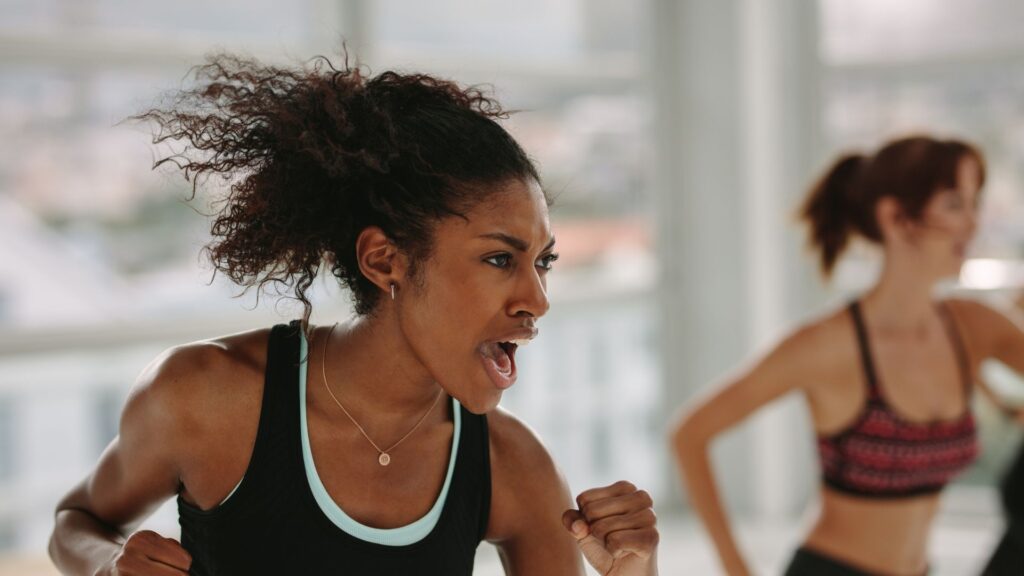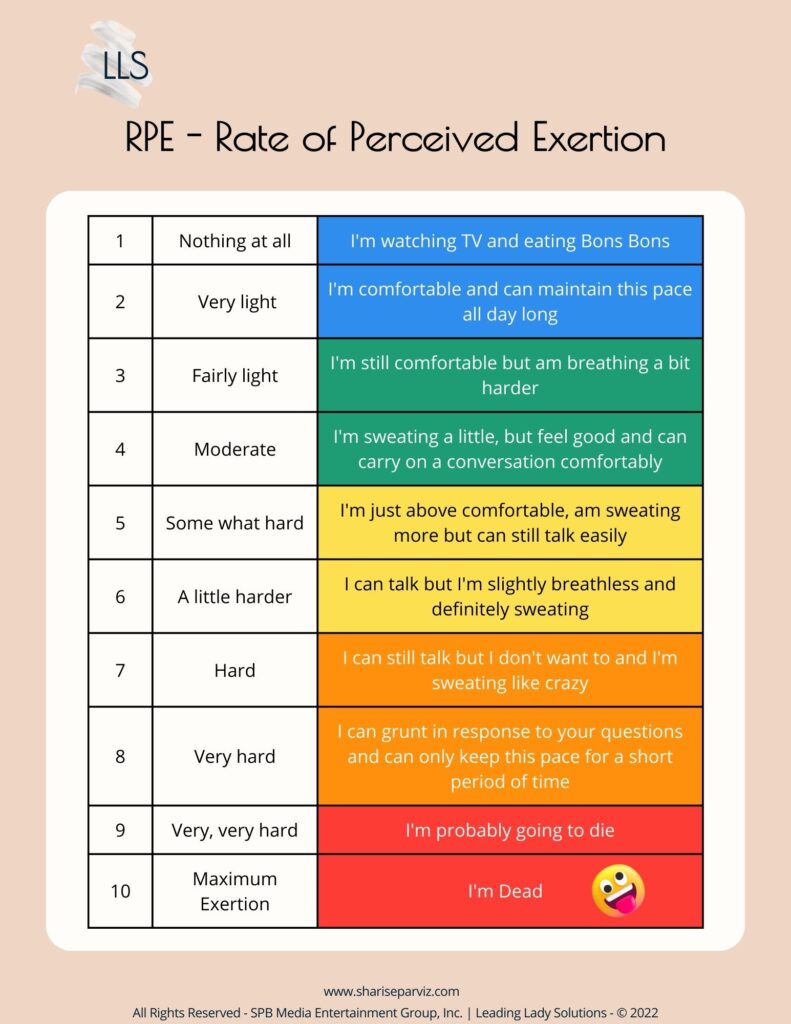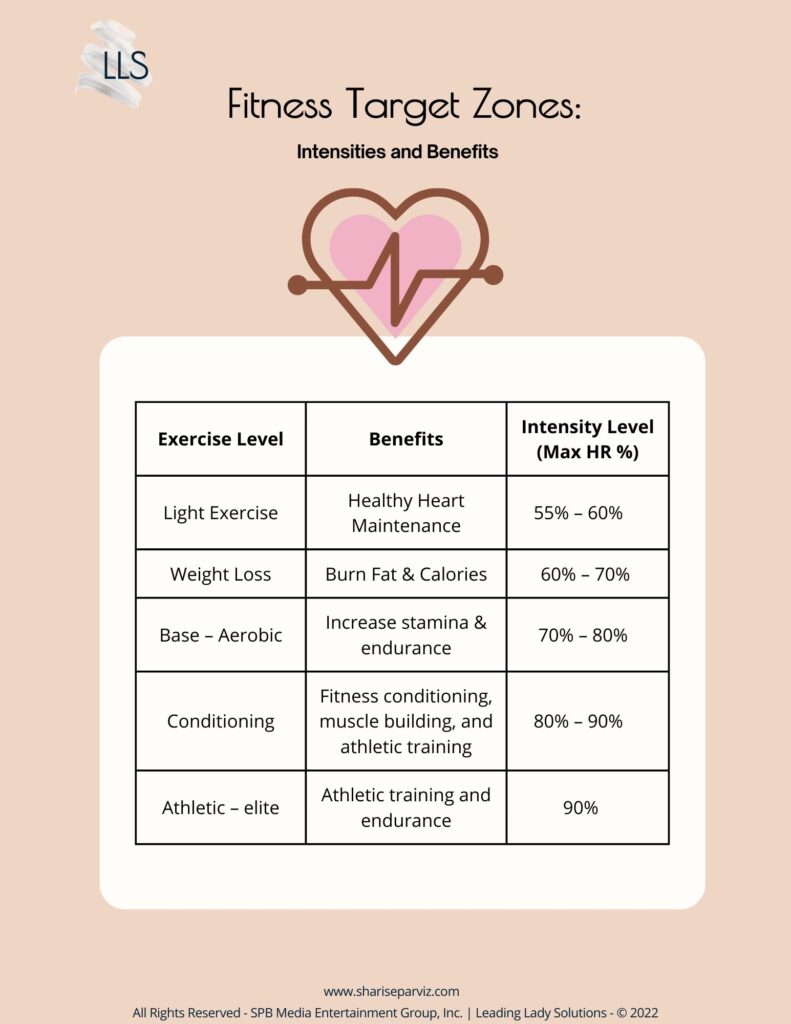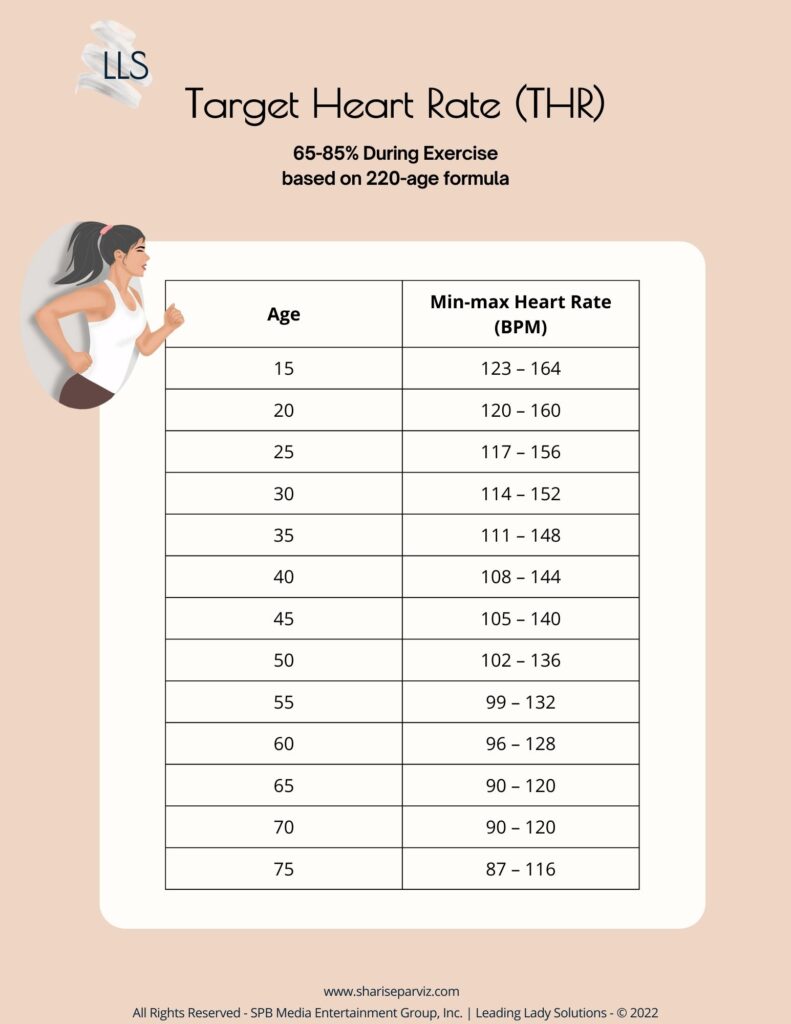
How Hard Are You Working?
Whether you want to burn calories and fat, train for an athletic event, or just gain or maintain better health, you want to get the most out of your workouts. You’re putting in the time, but do you know if you’re working at a level where you’ll see results?
This is where knowing your Target Hart Rate (THR) can help. There are a few different ways to determine your (THR) which is the exercise Heart Rate (HR) you are aiming for to achieve your desired results.
Here are some of the most commonly used methods.
Talk/Sing Method:
A simple monitoring method is the Talk/Sing method. Test yourself during exercise to see if you can speak in short sentences. For moderate intensity, you should be able to speak but not able to sing (but, If you can carry on a lengthy debate with someone – pick up the intensity!).
RPE – Rate of Perceived Exertion: 10 Point Scale
This is another simple way to monitor your THR and is related to the Talk/Sing Method. While exercising, rate yourself on how you feel on a scale of 1-10 with 10 being your all-out maximum and 1 being ” Why bother, I could have just stayed in bed. ” Beginners should start between a 2-3 RPE, moderate 4-5, and advanced 6+.
Here’s a little chart I had some fun with. My dance and fitness students love it.

220-Age Formula:
This is considered a more accurate method if using a heart rate monitor or manually reading your heart rate . The charts you may see displayed in gyms use this method.
- Find your Maximum Heart Rate (MHR): 220 – age = MHR
- Example: 220 – 40 (age) = 180 (MHR)
- Find your Target Heart Rate (THR): (MHR) x (desired % of exercise intensity – between 55%-90%) = Target Heart Rate (THR)
- Example: A 40 year old woman who wants to work at 65% intensity level:
220 – 40
= 180 (MHR)
x .65 (exercise intensity)
= 117 (THR)
- so, 117 would be the HR she would aim for during her exercise session
TIP: Exercise intensity should be between 64%-75% for moderate intensity and up to 77% and 93% for vigorous intensity.
TIP: Below is a couple of “cheat sheets”


Tip: You will want to monitor your heart rate or check exertion levels during the peak of your exercise to make sure you are hitting your target.
My Choice
There are some limitations to the 220-age formula and the suggested percentages may not always fit depending on your fitness level.
I typically work past the suggested percentages for my age. But I’ve been working out for quite some time now (say 30+ years). So for me I don’t typically start breaking a sweat until I reach 150 THR.
So, I usually just go by exertion level. How I feel. I find it the simplest and most convenient method to use as well as most accurate for me knowing how hard or easy I’m working. And then if I’m curious or want to verify, I’ll check my THR using the 220-age formula.
The important thing here is to choose a method that works for you and listen to your body. Some days you’ll feel strong and some days, not so much. Illness, stress, lack of sleep, time off from exercise or even exercising too much can all have an affect on your training. So, respect your body and let it tell you how hard it should be working that day. Let it tell you when to push and when to ease up.
It’s not about meeting some percentage or number, but about moving your body, feeling like you’re working at your best, challenging yourself when appropriate, and enjoying the process!
For a Freebie copy of my charts, get them here

